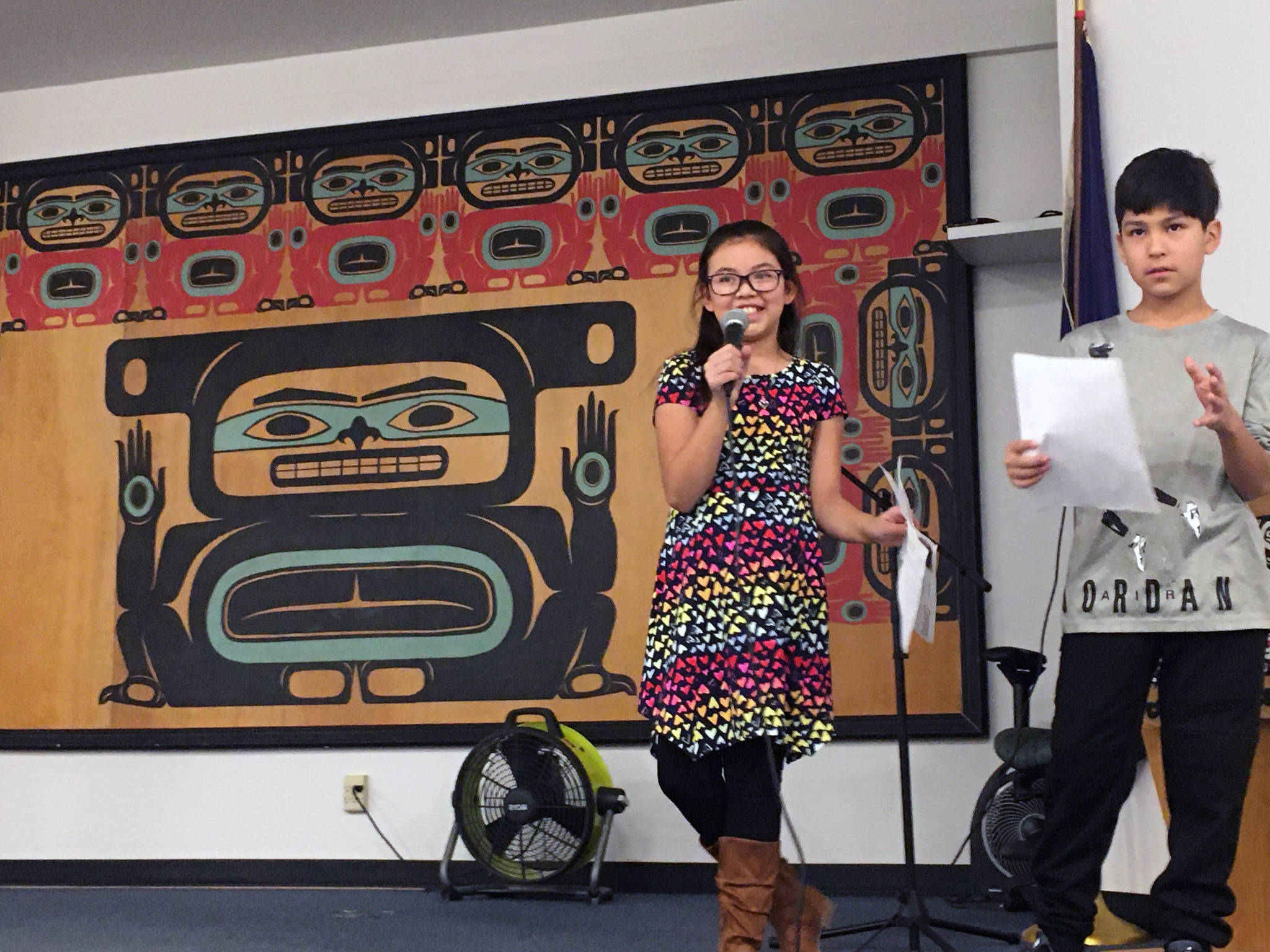A group of elementary school students from Juneau is leading an effort to add a second verse to the state song, “Alaska’s Flag.”
The effort began when Glacier Valley Elementary School Sít’ Eetí Shaanáx music teacher Lorrie Heagy taught the song to her students on Alaska Day in October. The students learned the well-known first verse, but also the lesser-known second verse that references Benny Benson, the 13-year-old Aleut who designed the state flag.
“A Native lad chose our Dipper’s stars for Alaska’s flag that there be no bars among our cultures,” begins the second verse, written by Carol Beery Davis in 1987.
“As their music teacher, I taught both verses of the Alaska Flag song to my fourth- and fifth-graders at Glacier Valley,” Heagy said in an email. “I shared with them that I don’t have to teach the second verse because this verse is not official. I choose to teach it because unlike the first verse, the second verse recognizes the indigenous people of this land, Benny Benson, an Alaska native who designed the Alaska flag when he was 13 years old and ‘all cultures clear and bright.’”
That led some of her students to inquire why the second verse wasn’t officially part of the song, and how they might go about changing that.
That led to a bit of Googling and Heagy, along with four students who volunteered to help, Elijiah Wyatt, Hunter Carte, Rylan Henderson and Aiden Jenkins, reached out to local lawmaker, Rep. Andi Story, D-Juneau.
The students then worked with Story to learn about the process of drafting a bill and what it takes to get legislation passed.
Some of Heagy’s students even gave testimony at a Juneau School Board meeting and a House Community and Regional Affairs meeting about the importance of the second verse.
“That part of the song is not just honoring the settlers or the Alaska Natives. It’s honoring everyone,” Sahara Shoemake, a fourth-grade student, told the school board. “It’s like a little welcome from Alaska for people who come. It’s like hey, we’ll honor you, we’ll respect you, we’ll support you.”
Fourth-grader Judah Marr, who is Tsimshian, agreed in his testimony.
“I strongly believe that the second verse of the Alaska Flag Song should be made official because the first line which reads, ‘a Native lad chose the Dipper’s star for Alaska’s flag’ recognizes Benny Benson who drew the design for the Alaska flag,” Marr said. “The second verse also recognizes Alaska Native people, who were the first people of this land. I urge you all to vote yes on HB 193. Gunalchéesh, T’oyaxsit ‘nüüsm, Ha’wáa.”
Story’s bill wouldn’t require the song to be sung on any occasion, it would just enshrine the verse in state law as an official part of the state song.
“It doesn’t tell anyone that you have to sing the verse,” Story said. “I don’t see it as a problem. I think we’ll see lots of people wanting to sing the song.”
This isn’t the first time the second verse has come before the Legislature. In 2010, the New York Times reported that one lawmaker unsure of the second verse was current House Speaker Bryce Edgmon, I-Dillingham.
Support for the song has grown among Heagy’s students and the community.
Heagy’s students have created a group called the Dippers to support the second verse, who have a website with performances of the state song with both verses and a rap urging people to support the bill.
According to Heagy, organizations that have written letters of support for the bill include Central Council Tlingit and Haida Indian Tribes of Alaska, Sealaska Heritage Institute, Alaska Federation of Natives, Juneau School District and Alaska Native Sisterhood Camp 2.
Faith Contreras, 10, who is Tlingit, said she wanted to see the verse added because it honored Alaska Natives.
“It includes the Alaska Native culture and it includes all cultures and talks about the creator of the Alaska flag,” she said. “Being an Alaska Native, it just makes me more proud.”
• Contact reporter Peter Segall at 523-2228 or psegall@juneauempire.com.

